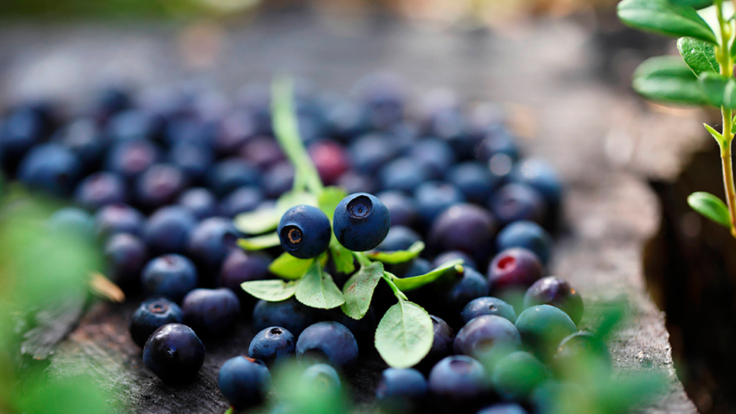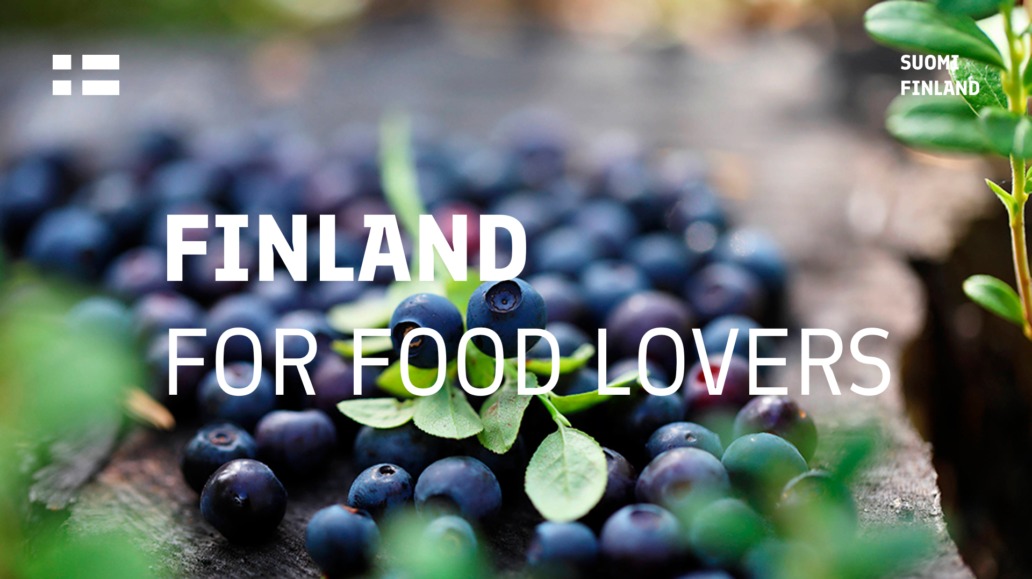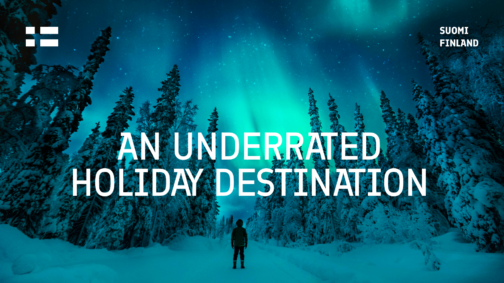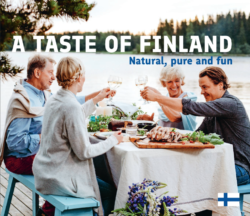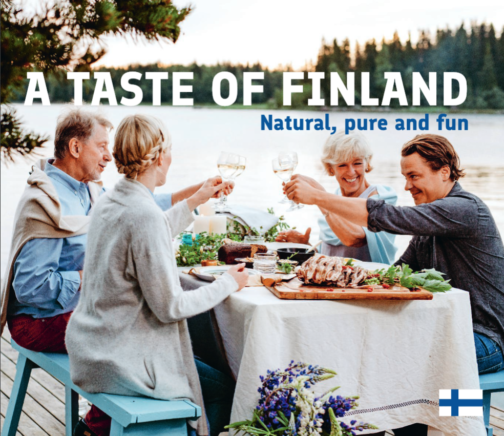Finland has reinvented itself in just one short century. Our national character “sisu” and Northern heritage have boosted us to the top of all kinds of country rankings from quality of life to quality of export products. It’s no secret that we take pride in being a bit quirky. Finns love to shock tourists with the exotic, black “delicacies” of salmiakki (salt liquorice), rye bread and mämmi (rye/malt pudding)!
This bleak-sounding menu is perfect for Finns, who live through the long dark winter of ”kaamos” while listening to heavy metal. It’s also loved by tourists bold enough to give them a try. But the colour black doesn’t say much about local cuisine, which actually comes in all shapes and colours. Finland’s pure flavours, clean environment and close relationship with nature are in demand all over the world.
A CULINARY
HISTORY
OF MULTIPLE
INFLUENCES
If Finnish food springs from the natural bounty of the North, other points of the compass have also had an influence – we are, after all, at the crossroads between East and West. For example, Finland’s Christmas table is mainly based on Western traditions, while our Easter food is Eastern. Much of our seafood is shared with other Nordic countries. Our plentiful assortment of bakery products is based on influences from all points of the compass. In geographical terms, Finland is a large country whose considerable regional differences can also be seen on the dining table. Finnish food is currently enjoying a Renaissance as chefs combine old traditions with new vibes from around the world. Food lovers and travellers can enjoy the creations of Finnish top chefs not only in fine restaurants but also at music festivals and street food events.
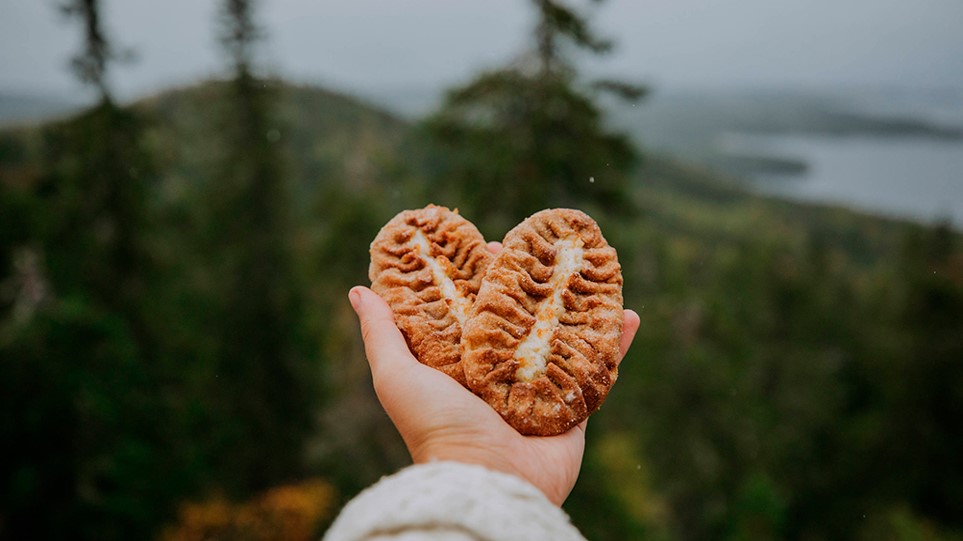
PURE FOOD
FROM
UNTOUCHED
NATURE
Above all, good Finnish food is both clean and wild. Thanks to extreme variations in light and temperature, which concentrate unique aromas in plants and make them rich in nutrients, Finnish flavours are clear, strong and sufficient in themselves. The key issue is that enjoying Finnish food forms part of a rounded experience which is good for your health and pampers your taste buds. In addition to clean and pure ingredients, it is essential to get in touch with the natural environment. Visitors here can come exceptionally close to the local origin of their food, whether in the countryside, at sea, or in the city. How about lunch by a campfire in wintry woods, smoking fish at a cottage in the islands, or a stack of pancakes on a stranger’s balcony on Restaurant Day?
These are experiences that fill much more than just the stomach.
TOP
TASTES
TO TRY
KARJALANPIIRAKKA
Karjalanpiirakka, also known as Karelian pie, is made with rye flour and filled with potato, rice or carrots.
RUISLEIPÄ
Ruisleipä – rye bread – made from sour dough, is a delicious Finnish staple.
KORVAPUUSTI
Korvapuusti translates into “cuffed ears” in English, but these are essentially cinnamon buns.
MUSTIKKAPIIRAKKA
Blueberry pie. Although all Finnish berries can be made into delicious pies, blueberry pie served with fresh milk is known and loved by all.
UUDET PERUNAT & SILLI
New potatoes with herring. New potatoes begin to appear around midsummer and the harvest is announced in the local papers each year.
PORONKÄRISTYS
Reindeer are found in Finland’s northern province of Lapland. Sautéed reindeer, served with mashed potatoes, is eaten in all seasons.
LEIPÄJUUSTO
Known in English as “Finnish Squeaky Cheese”, this is delicious with cloudberry jam.
SALMIAKKI
Salmiakki (salty liquorice) is a treat which almost all Finns are addicted to – and love to get visitors to try.
